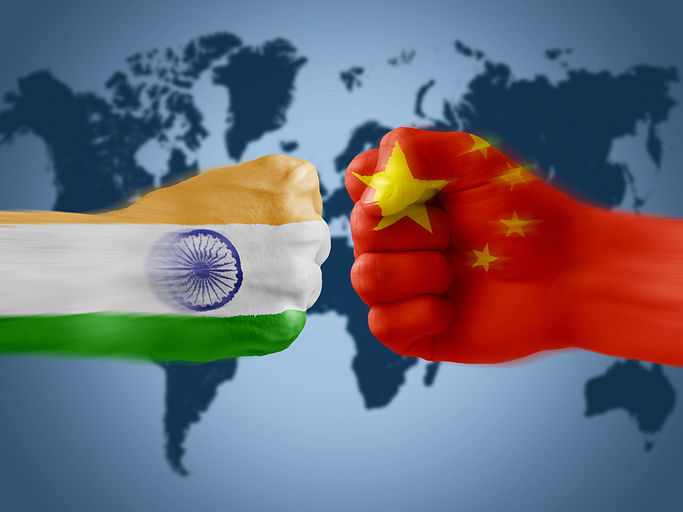
The unfortunate stoning and clubbing down of 20 Indian Army personnel by Chinese troops at Patrolling Point 14 of the Galwan region of the Western Sector of the Ladakh border will not only go down in history for the scale of brutality but also for the evaporation of any goodwill that has been assiduously built over the decades between the two countries.
Firstly, China’s troops crossed the Rubicon by the recent standards set as a part of the inter-military behaviour. The 1993, 1996 and 2013 confidence building measures (CBMs) between the two conventional armed forces have sought to bring in civilised ways of conduct on the border. Whenever border patrols advertently or inadvertently crossed over to the other’s perceived Line of Actual Control (LAC), CBMs came to the rescue to calm down any border incidents.
Border transgressions across the 3,488 km long border were about 6 per annum in the 1980s, increased to 20 in the 1990s, saw a quantum jump in late 1990s to over 200 and in the last eight years doubled to over 400 on an average a year. These transgressions were addressed through border personnel meetings at five designated places (increased to two more a couple of years ago) on the borders. Talking to each other, sorting out local differences on the LAC, humane treatment of any crossed-over patrols became the hallmark of such CBMs. However, Galwan 2020 has ushered in a new template – of ferociousness, fisticuffs and medieval ways of addressing differences between soldiers.
During the BRICS meeting at Xiamen in September 2017, soon after the Dokhlam incident petered out at the Bhutan-China-India borders, new set of CBMs were proposed but not yet unveiled – indicating Galwan-like events could become the ‘new normal’ in the new future. Institutional CBMs implementation led to maintaining overall peace and tranquillity on the borders. But these have outlived their purpose as they were intended only to prevent conflict, not enhance trust.
Changed realities
The brutal killings – in the backdrop of mutually agreed military disengagement and de-escalation process set by the June 6 commanders level meeting between Lt. Gen. Harinder Singh of 14 Corps at Leh and Maj. Gen Lin Liu of Xinjiang military district – suggests that a new low has crept into the Chinese side.
Secondly, although the killing of a Commanding Officer (CO) of the region is not new, Galwan 2020 sets a new pattern in the future interactions on the borders with the killing of Col. B Santosh Babu. In 1967, the CO, Col. Rai Singh, at Nathu La, was killed by the Chinese side. It led to retaliation by Commander Gen. Sagat Singh resulting in an estimated 300 Chinese casualties at Jelep La, Cho La and other areas with deployment of machine guns. In the 1975 incident at Tulung La in Arunachal Pradesh, likewise, four Assam Rifles soldiers were killed. Unconfirmed reports did suggest more than double of Chinese casualties at Galwan.
Thirdly, the official announcements from India and China indicate not only the continuing differences on the border but also the unilateral actions at the ground level. India’s foreign ministry spokesman stated that the violent face-off at Galwan is due to “an attempt by the Chinese side to unilaterally change the status quo there… India is very clear that all its activities are always within the Indian side of the LAC”.
The spokesman for the Western Theatre Command at Chengdu in China, that oversees military operations on the LAC, said that the whole of the Galwan valley “always” belonged to China and that the events of June 15 “[were] seriously damaging [to] the relations between the two armed forces and the feelings of the two peoples”. No proof of ownership of Galwan, if any, nor exchange of maps in this regard was made by China so far and clearly smacks of China’s unilateral occupation and militarisation of the South China Sea. Significantly, with both sides sticking to their guns and no progress in the border talks at the 22 special representative level talks suggest that we have to live with uncertainties on the borders.
Fourthly, Galwan 2020 skirmishes are likely to impact on a whole range of issues in the bilateral relations. It is only recently that the strategic leaderships have attempted “informal summit” meetings to expand relations despite the perennial problems of unresolved territorial dispute and other issues. Meetings at Wuhan in April 2018 and Chennai in October 2019 are said to have ushered in normalisation of relations. However, the Naku La incident in Sikkim, Pangong Tso and Galwan incidents now, and the widespread acrimony that these evoked, are likely to set back the clock in the bilateral relations.
This year began with the pomp and show of celebrating the 70th anniversary of the setting up of bilateral relations with 35 activities each to be conducted in each other’s countries. Most of these are related to people-to-people relations, tourism, think-tank meetings, media interactions, youth exchanges and others. The Galwan events are likely to dampen any such enthusiasm and hit China’s soft power most in the coming years, which has already been impacted with the spread of virus from Wuhan.
Fifthly, the Galwan incident suggests the need for strengthening conventional and strategic deterrence capabilities in the border areas. Specifically, as the LAC areas are remote and inhospitable, use of hi-technology items in intelligence, surveillance and reconnaissance needs to be intensified and extensively deployed to the border areas. Early warning tools and swift logistics facilities have proven to be indispensable for deterring such events happening again.
(Srikanth Kondapalli is Professor in Chinese Studies at Jawaharlal Nehru University, New Delhi)
Disclaimer: The views expressed above are the author’s own. They do not necessarily reflect the views of DH.